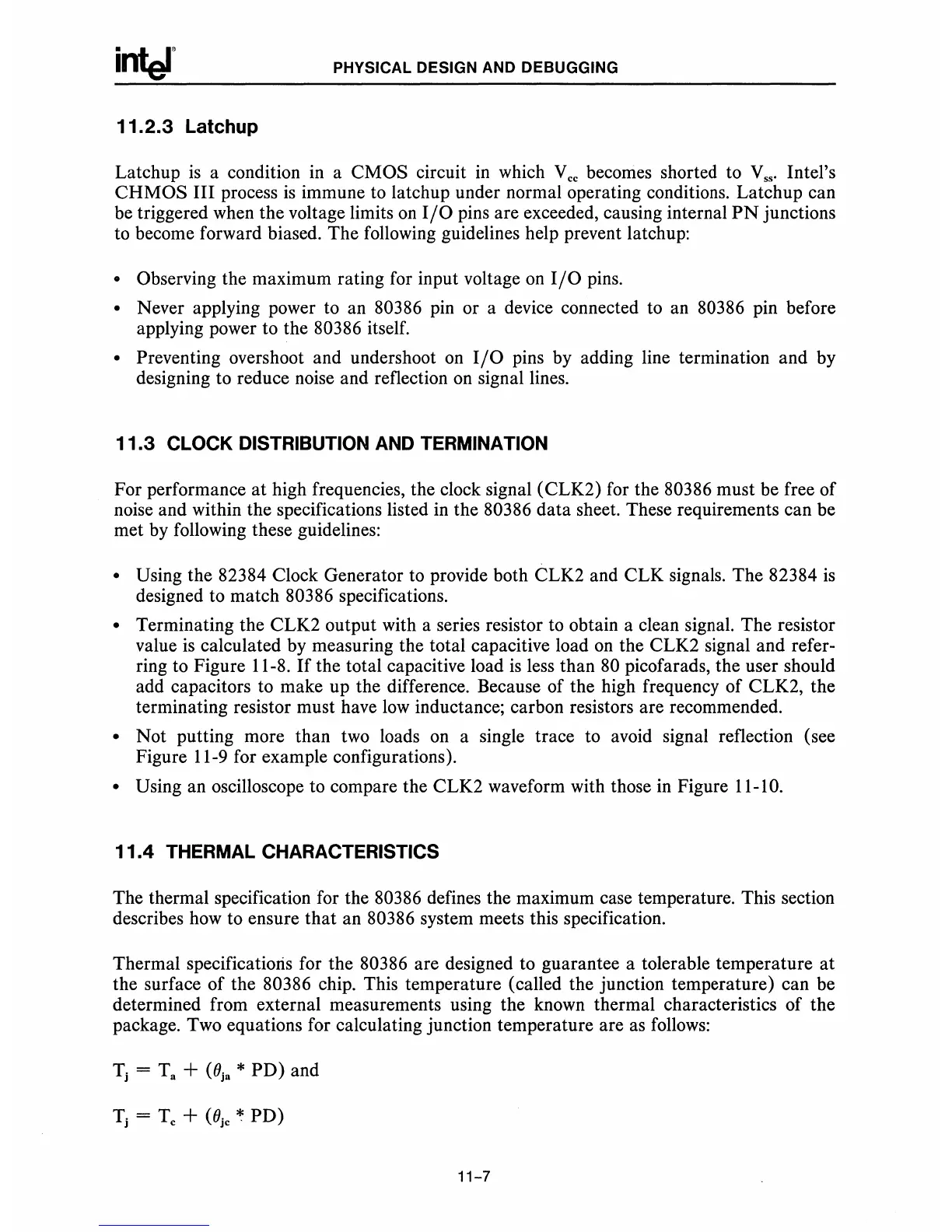PHYSICAL DESIGN AND DEBUGGING
11.2.3 Latchup
Latchup
is
a condition
in
a CMOS circuit
in
which
Vee
becomes shorted to V". Intel's
CHMOS
III process
is
immune to latchup under normal operating conditions. Latchup can
be triggered when the voltage limits
on
I/O
pins are exceeded, causing internal
PN
junctions
to become forward biased. The following guidelines help prevent latchup:
• Observing the maximum rating for input voltage
on
I/O
pins.
• Never applying power to an 80386 pin or a device connected to an 80386 pin before
applying power to the 80386 itself.
• Preventing overshoot and undershoot
on
I/O
pins by adding line termination and by
designing to reduce noise and reflection
on
signal lines.
11.3 CLOCK DISTRIBUTION AND TERMINATION
For performance
at
high frequencies, the clock signal (CLK2) for the 80386 must be free of
noise and within the specifications listed
in
the 80386 data sheet. These requirements can be
met by following these guidelines:
• Using the 82384 Clock Generator to provide both CLK2 and CLK signals. The 82384
is
designed to match 80386 specifications.
• Terminating the CLK2 output with a series resistor to obtain a clean signal. The resistor
value
is
calculated by measuring the total capacitive load
on
the CLK2 signal and refer-
ring to Figure 11-8.
If
the total capacitive load
is
less than 80 picofarads, the user should
add capacitors to make up the difference. Because of the high frequency of CLK2, the
terminating resistor must have
low
inductance; carbon resistors are recommended.
• Not putting more than two loads
on
a single trace to avoid signal reflection (see
Figure 11-9 for example configurations).
• Using an oscilloscope to compare the CLK2 waveform with those
in
Figure 11-10.
11.4 THERMAL CHARACTERISTICS
The thermal specification for the 80386 defines the maximum case temperature. This section
describes how to ensure that an 80386 system meets this specification.
Thermal specifications for the 80386 are designed to guarantee a tolerable temperature at
the surface
of
the 80386 chip. This temperature (called the junction temperature) can be
determined from external measurements using the known thermal characteristics of the
package. Two equations for calculating junction temperature are as
follows:
T
j
= T. +
(OJ.
*
PD)
and
11-7

